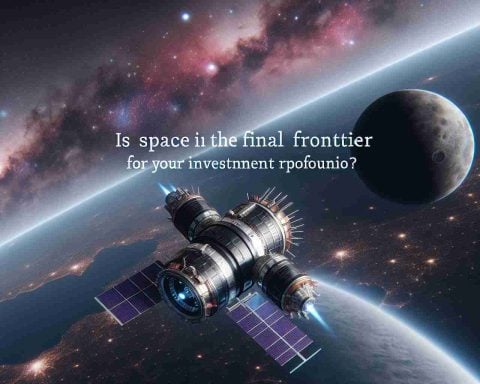Pakistan Enters the Space Age
On January 17, Pakistan took a significant leap in its space endeavors by successfully launching its first domestically developed observation satellite. The launch occurred at the Jiuquan Satellite Launch Center in northern China, utilizing the Long March-2D rocket for deployment.
The satellite, named PRSC-EO1, not only marked a historic achievement for Pakistan but also joined two additional satellites on the same mission, Tianlu-1 and Lantan-1. This mission is set to enhance the country’s capabilities to monitor natural resources effectively, respond to disasters with improved precision, and support better urban planning and agricultural practices.
With the assistance of the Space and Upper Atmosphere Research Commission (SUPARCO), this initiative represents a pivotal development in utilizing space technology for national growth. The Prime Minister expressed pride in the project, highlighting the expanding interests and capabilities of Pakistan in space science and technology.
Equipped with advanced electro-optical sensors, PRSC-EO1 will gather vital data and images from the Earth’s surface. These sensors are designed to detect sunlight reflected off the ground and measure the radiation emitted by it, empowering Pakistan with crucial insights for environmental management and development planning. This step promises to propel Pakistan to the forefront of satellite technology and resource management in the region.
Transforming Horizons: The Broader Implications of Pakistan’s Space Initiative
Pakistan’s entry into space exploration with the launch of the PRSC-EO1 satellite underscores a profound shift not only for its technological landscape but also for its societal and cultural fabric. As countries increasingly recognize the strategic importance of space technology, Pakistan’s initiative may inspire a resurgence of interest in STEM—science, technology, engineering, and mathematics—among its youth, catalyzing a new generation of innovators and fostering a workforce adept in high-tech fields
Pakistan’s Leap into Space Technology: Transforming National Development
Pakistan has made a groundbreaking advancement in its space exploration journey with the successful launch of its first domestically developed observation satellite, PRSC-EO1. This historic mission, conducted on January 17 at the Jiuquan Satellite Launch Center in northern China, utilized a Long March-2D rocket and marks a major milestone for the nation in the field of aerospace technology.
Overview of PRSC-EO1
PRSC-EO1 is not just a satellite; it represents a strategic investment in enhancing Pakistan’s capabilities in managing natural resources, responding to disasters, and supporting urban planning and agriculture. It was launched alongside two other satellites, Tianlu-1 and Lantan-1, which further emphasizes Pakistan’s growing involvement in international space collaborations.
Features and Specifications
Advanced Electro-Optical Sensors: The satellite is equipped with cutting-edge electro-optical sensors that enable it to capture high-resolution images of the Earth. These sensors are pivotal for various applications, such as:
– Environmental Monitoring: Understanding changes in land use, forest cover, and water bodies.
– Disaster Management: Providing real-time imagery to aid in disaster response and recovery efforts.
– Urban and Agricultural Planning: Assisting in the development of smart cities and optimizing crop yields based on precise data.
Use Cases
1. Natural Resource Management: Utilizing satellite imagery to monitor and manage forests, mineral deposits, and water resources more effectively.
2. Climate Change Studies: Offering critical data that contribute to climate research and policy formulations.
3. Urban Development: Supporting city planners with up-to-date topographical and environmental information for sustainable urbanization.
Challenges and Limitations
While the launch is a significant achievement, Pakistan faces challenges such as:
– Technical Expertise: Continued development of in-house skills is necessary to maintain and operate such sophisticated technology.
– Geopolitical Concerns: Navigating international collaborations while maintaining national security interests.
– Funding and Investment: Sustained financial backing for further advancements in space technology will be crucial.
Insights and Future Prospects
The successful deployment of PRSC-EO1 represents more than just a technological advancement; it is a stepping stone towards a more robust space program for Pakistan. The Prime Minister’s endorsement highlights the importance of space in national growth strategies.
As Pakistan continues to invest in satellite technology, experts predict that it could become a regional leader in space applications, benefiting not only its economy but also enhancing its partnerships with other nations involved in space research.
Pricing and Market Analysis
Though specific costs related to the satellite development and launch were not disclosed, it is essential for Pakistan to analyze the long-term return on investment from such projects. By leveraging these capabilities, Pakistan can attract investment into research and development sectors, positioning itself as a hub for aerospace innovation.
Conclusion
As Pakistan embarks on its journey into space, the implications of this advancement extend beyond technology. The PRSC-EO1 launch showcases the potential for improved governance, better resource management, and enhanced disaster response capabilities. With continuous progress in this field, Pakistan is likely to redefine its trajectory in the realm of space science and technology.
For more details on Pakistan’s developments in space technology, visit the official SUPARCO website.



















